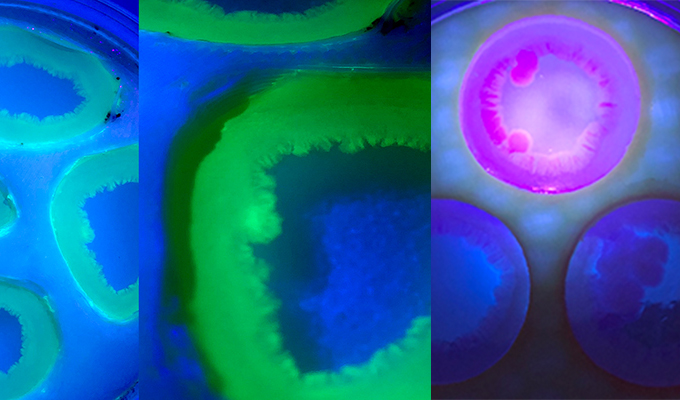| ARTIFICIAL LUCIDUM | |||
In collaboration with Christine Marizzi, Cold Spring Harbor Lab / DNA Learning Center, NY |
The project adapts a bio inspired form finding method using Physarum Polycephalum, single celled organisms that can aggregate together to produce efficient, multi-cellular spatial structures. This behavior was then studied using agent-based computational design simulations to generate the design of the architectural devices. Spaces within these devices are allocated to grow E.coli bacteria, which act as biosensors that detect the presence or absence of environmental toxins, such as ozone UV light levels, heavy metals, and sulfur dioxide. Bacterial biosensors are created by DNA cloning technology followed by bacterial transformation. An Augmented Reality app is being created to visualize the toxins levels in a quantifiable fashion. | ||
 |
|||
| All content © Diniz & Melendez | |||